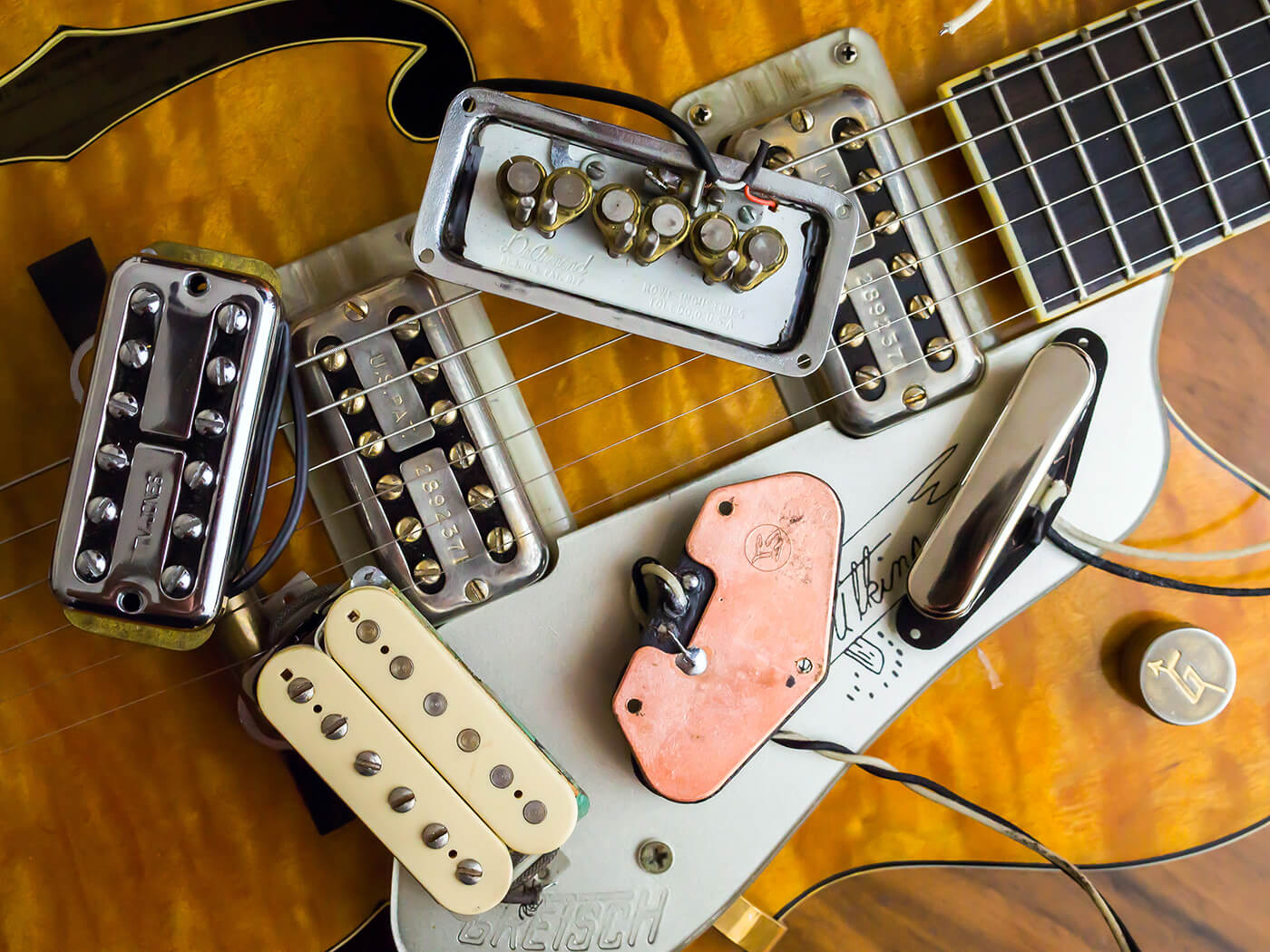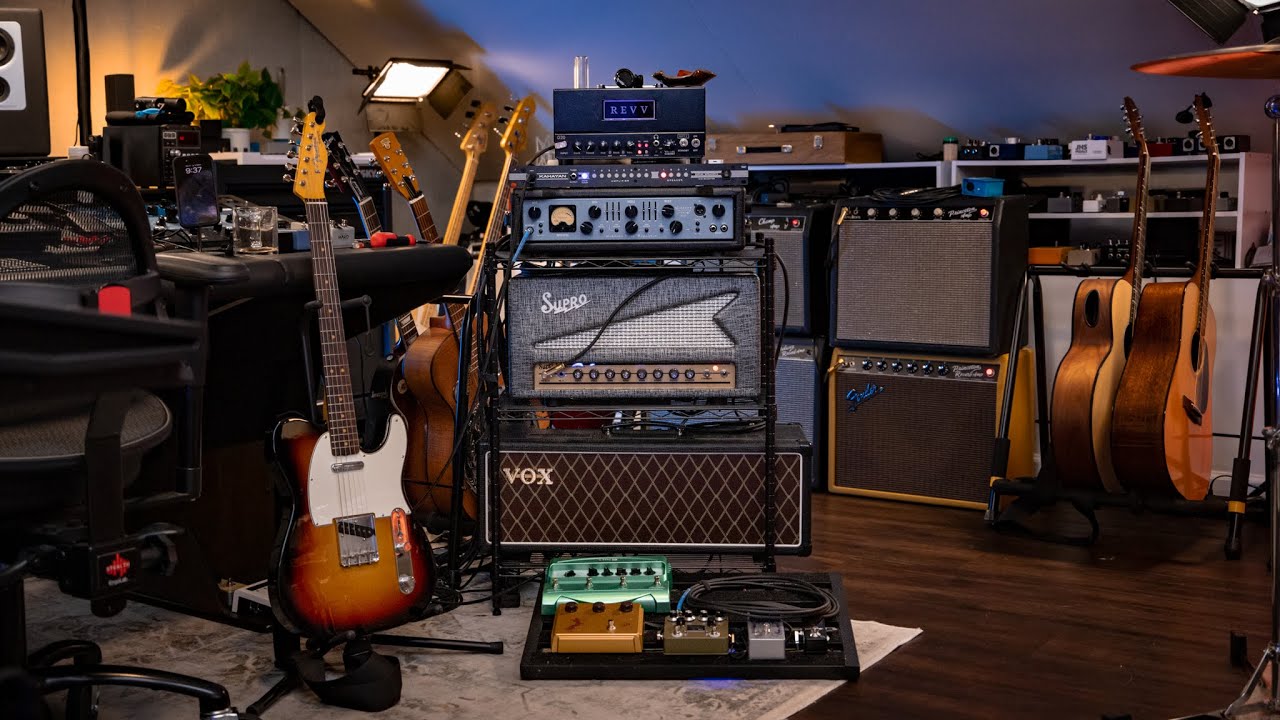Few guitar gear stories start as casually as Sol Philcox-Littlefield’s iconic 1967 Gibson ES-335. Purchased on a whim as a ‘tax treat,’ this vintage beauty unexpectedly became a cornerstone of his signature country guitar tone. This serendipitous acquisition reveals the organic and personal nature behind professional sounds that many strive to emulate. In this exclusive deep dive, we’ll dissect every corner of Sol’s rig—vintage guitars, amp heads, and pedalboard setup—to uncover the technical choices and modifications that craft his distinctive country session voice.
Key Takeaways
- Understanding the role of vintage and modified guitars in shaping unique tones: Helps readers appreciate how physical guitar characteristics influence playing and sound
- Insight into amp head selection and switching systems for versatile tonal options: Guides readers on configuring amps for dynamic studio and live environments
- Comprehensive pedalboard breakdown with functions and usage tips: Enables guitarists to optimize effects chains for professional-grade tone shaping
Guitars That Define the Sound: Vintage Treasures and Creative Modifications

At the heart of Sol Philcox-Littlefield’s guitar gear lies an array of vintage instruments, each carefully chosen or modified to serve a unique tonal purpose. The story of his prized 1967 Gibson ES-335 begins not in a guitar shop but as a spontaneous tax write-off decision—an impulsive purchase that blossomed into a tonal legend. This semi-hollowbody’s warm, resonant voice and nuanced response have become synonymous with Sol’s country guitar tone, delivering a blend of clarity and grit that suits both studio sessions and live performances.

Sol’s 1967 Gibson ES-335, the unexpected cornerstone of his tone
Another cornerstone is his 1962 Gibson SG, which Sol affectionately calls his ‘butchered’ SG. This guitar has undergone significant refinishing and modifications, including altered pickup configurations and body work that give it a raw, edgy character. The ‘butchered’ SG is like a rugged sculptor’s chisel, rough edges that inspire unconventional creativity and push Sol to explore new sonic textures.

The ‘butchered’ SG: a rugged sculptor’s chisel inspiring creative playing
Beyond these two, Sol’s collection includes a Gretsch Chet Atkins Tennessean, known for its twangy, bright character; an SG fitted with P-90 pickups delivering punchy midrange growl; a Gibson Les Paul Custom for thick, sustaining tones; a Jerry Jones baritone for deep, resonant textures; a Silvertone semi-hollowbody adding vintage charm; and various Fender models that provide clean and versatile voices. Each guitar acts as a different ‘voice actor’ in a film—bringing unique character and emotion to the story Sol tells through his playing.
Sol’s deliberate guitar selection and modifications align closely with the demands of country music session work, where tonal nuance and adaptability are paramount. For guitarists interested in the craft behind these customized tones, Mod Garage: The Truth About Putting Vintage Parts Into New Guitars offers an insightful look at how swapping vintage components can shape and refine an instrument’s voice. Understanding how these physical and electronic characteristics influence tone offers invaluable insights for guitarists aiming to refine their own sound.
Video tutorial: Vintage Guitar Mod with Modern Twist
Amp Heads and Switching: Crafting Versatility and Tone Precision

Sol’s amp cabinet is a carefully curated collection of tube amp heads, each selected for its distinctive tonal signature and response. His arsenal includes the classic Fender Bassman, prized for its warm low-end and smooth breakup; the Fender Bandmaster, delivering clean headroom with a slightly brighter edge; the legendary Marshall JCM800, known for its aggressive midrange and punch; the Guytron GT100 F/V, offering modern tonal versatility; and the Matchless DC-30, revered for its chimey cleans and dynamic touch sensitivity. Understanding the unique qualities of various amp heads is crucial, and for players seeking to explore or expand their knowledge, a guitar amp buying guide for beginners offers an excellent foundation on how different amps affect tone and performance.

Sol’s amp heads alongside his Kahayan amp switcher, the command center for tonal routing
Crucially, Sol integrates these amps with a Kahayan amp switcher system, a sophisticated signal routing device that allows seamless switching between heads or combining them without signal loss or noise. This setup acts like a ‘traffic controller’ for his tone, directing the sound’s journey with precision and flexibility—perfect for the dynamic shifts required in studio and live environments.
Adding to the textural palette, Sol employs a Roland Chorus Echo RE-501, a vintage tape delay unit that injects lush modulation and spatial depth, enriching his country guitar tone with ambient character. Each amp head functions like a different lens on a camera, altering the focus and color of the sound palette to suit various guitars and musical contexts.
Video tutorial: Understanding Guitar Amp Heads and Settings
Pedalboard Powerhouse: Effects and Their Roles in Shaping Tone

Sol’s pedalboard is a meticulously organized powerhouse of effects, designed to expand tonal possibilities while maintaining clarity and dynamics. The board features essential categories: tuners for precision, volume pedals for dynamic control, overdrives to add grit and sustain, delays and modulation units for spatial effects, pitch effects for creative textures, and multi-effects processors for complex soundscapes.
Standout pedals include the Analog Man King of Tone, revered for its transparent overdrive; the Dr. Scientist Bitquest, a multi-effect unit offering glitchy pitch and delay effects; the Strymon El Capistan, a tape delay emulation adding warmth and character; and the Eventide H90, a versatile multi-effects processor capable of lush reverbs, delays, and pitch shifting. Integration of multi-switch controllers allows Sol to toggle complex effect combinations effortlessly, while volume pedals serve as expressive ‘dimmer switches’ to control intensity dynamically.

Sol’s pedalboard: a palette of sonic colors and textures
Signal chain optimization is key; Sol places tuners and volume pedals at the start for clean control, followed by overdrives and modulation effects, with delays and reverbs near the end to preserve clarity. This thoughtful arrangement ensures maximum tonal fidelity and responsiveness, critical for professional-grade tone shaping. For those looking to dive deeper, the ultimate guide to guitar pedal board set up offers an easy-to-follow roadmap to building and arranging your pedalboard effectively.
Video tutorial: Building your first guitar pedalboard
The Road Ahead
Exploring Sol Philcox-Littlefield’s rig reveals a masterclass in intentional gear selection, creative modifications, and thoughtful signal chain design. His blend of vintage guitars, versatile amp heads with advanced switching, and a carefully curated pedalboard embodies a holistic approach to crafting country guitar tone. For intermediate to advanced guitarists, understanding these technical insights offers a roadmap to developing personal sonic identities rooted in both tradition and innovation.
Embrace experimentation with your own guitar gear, inspired by Sol’s setup—whether that means trying new amp configurations, modifying vintage guitars, or reorganizing your pedalboard for greater control. Stay curious about gear technologies and their musical applications, and remember that every piece of equipment is a tool for personal expression.
What’s one piece of gear or modification you’re inspired to try after exploring Sol Philcox-Littlefield’s rig? Share your thoughts below!